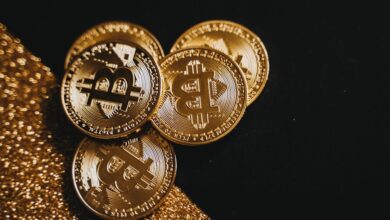Gold in Central Banking: Leveraging Gold Reserves for Economic Stability and Investment Strategies

In an increasingly volatile economic landscape, gold has re-emerged as a vital asset for central banks around the world. As a traditional safe haven asset, gold plays a critical role in managing reserves, providing stability amidst fluctuating currencies and geopolitical uncertainties. This article delves into how central banks utilize gold to bolster their financial strategies, examining the significance of gold reserves in maintaining economic resilience. We will explore recent gold market trends, revealing how central banks influence gold prices and investment strategies through their purchasing behaviors. Additionally, we will address the importance of sustainable gold mining and recycling, highlighting the future of central bank gold holdings in an era of heightened environmental awareness. Whether it’s gold bullion, coins, or ETFs, understanding the intricate relationship between central banks and gold is essential for investors navigating the complexities of gold investment in today’s market. Join us as we uncover the multifaceted role of gold in central banking and its implications for global gold demand.
- 1. The Role of Gold Reserves in Central Banking: Understanding Safe Haven Assets
- 2. Gold Market Trends: How Central Banks Influence Gold Prices and Investment Strategies
- 3. Sustainable Gold Mining and Recycling: The Future of Central Bank Gold Holdings
1. The Role of Gold Reserves in Central Banking: Understanding Safe Haven Assets
Gold has long held a pivotal role in central banking, serving as a cornerstone of financial stability amidst economic uncertainty. Central banks utilize gold reserves primarily as safe haven assets, which provide a hedge against inflation and currency devaluation. The intrinsic value of gold, coupled with its historical significance, ensures that central banks can maintain a robust reserve portfolio, particularly during times of geopolitical instability or market volatility.
In the current economic landscape, characterized by fluctuating gold prices and fluctuating global gold demand, central banks are increasingly turning to gold as a strategic investment. The gold market analysis reveals that central banks are not merely stockpiling physical gold, such as gold bars and coins, but are also exploring gold ETFs and gold futures as part of their investment strategies. These instruments allow central banks to diversify their reserves while retaining the ability to react swiftly to changing market conditions.
Gold's appeal as a safe haven asset is further amplified by its role in gold recycling and sustainable gold mining practices. As consumers and investors alike prioritize ethical sourcing, central banks are keen to support sustainable gold production methods, ensuring that their reserves align with global standards for responsible gold trade. This commitment not only enhances the reputation of central banks but also contributes to the broader goal of promoting sustainable economic practices.
Moreover, the relationship between gold and inflation is another critical consideration for central banks. As inflationary pressures rise, gold has historically acted as a reliable store of value, making it an essential component of reserve management strategies. By holding significant gold reserves, central banks can mitigate the risks associated with fiat currency fluctuations and bolster investor confidence.
In summary, the role of gold reserves in central banking is multifaceted, encompassing aspects such as gold investment, the gold standard, and the evolving dynamics of the gold market. As central banks navigate the complexities of the modern financial landscape, their commitment to maintaining and enhancing gold reserves underscores the enduring significance of gold as a pillar of economic resilience.
2. Gold Market Trends: How Central Banks Influence Gold Prices and Investment Strategies
Central banks play a pivotal role in shaping gold market trends, influencing both gold prices and investment strategies. As major players in the global gold market, central banks hold substantial gold reserves, which act as a buffer against economic uncertainty and inflation. This strategic allocation of gold not only stabilizes their own financial systems but also impacts investor sentiment across the globe.
When central banks decide to increase their gold reserves, it often leads to a corresponding rise in gold prices. For instance, during periods of economic turbulence or geopolitical instability, central banks may bolster their gold holdings to solidify their status as a safe haven asset. This action can trigger a surge in gold investment, pushing prices higher as demand outstrips supply. Consequently, investors often look to gold ETFs and gold futures as methods to gain exposure to rising gold prices without holding physical gold directly.
Moreover, the actions of central banks can significantly affect gold market analysis and investment strategies. When a central bank announces a policy shift towards gold accumulation, it can spark a wave of interest in gold mining stocks and gold collectibles. Investors may also consider diversifying their portfolios with gold bullion, gold bars, or even luxury gold jewelry, as these assets often retain value during economic downturns.
On the flip side, if central banks signal a reduction in gold purchases or begin to sell off their gold reserves, it can lead to a decline in gold prices. This dynamic often compels investors to reevaluate their strategies, focusing on gold recycling or exploring emerging markets for sustainable gold mining practices. Additionally, the interplay between gold and cryptocurrency has gained traction, with some investors viewing gold as a more stable alternative to digital currencies.
The global gold demand is also influenced by central bank policies, as these institutions shape the overall gold trade environment. Factors such as gold refining capabilities and the prevalence of gold smuggling can further complicate market trends, affecting both supply and prices. As central banks continue to navigate the complexities of financial stability and inflation, their influence on gold market trends will remain a critical aspect of investment strategy for both institutional and retail investors alike.
3. Sustainable Gold Mining and Recycling: The Future of Central Bank Gold Holdings
As central banks around the world increasingly recognize the importance of gold in their reserves, the future of gold holdings is becoming intertwined with sustainable practices. Sustainable gold mining and recycling are gaining traction as essential components in managing gold reserves. This shift is not only beneficial for the environment but also aligns with the growing global demand for ethically sourced materials.
Sustainable gold mining focuses on reducing the ecological footprint of gold extraction processes. By adopting environmentally friendly techniques and responsible sourcing, central banks can ensure that their gold investments are not only profitable but also sustainable. This approach addresses the challenges posed by gold smuggling and illegal mining practices that can tarnish the gold trade and impact gold prices. Through strict adherence to sustainability standards, central banks can enhance their reputations while contributing to the overall integrity of the gold market.
Moreover, gold recycling is emerging as a viable alternative for central banks looking to bolster their gold reserves without further straining natural resources. With advancements in gold refining technology, recycled gold can be transformed into high-quality bullion, bars, and coins that meet the rigorous standards expected of physical gold. This practice not only helps maintain supply in the gold market but also reduces the need for new gold production, which can have detrimental environmental effects.
As the gold market continues to evolve, central banks are also exploring gold ETFs and gold futures as part of their investment strategies. These financial instruments allow for greater flexibility and liquidity, providing a means to manage gold exposure without the need for large physical holdings. However, the intrinsic value of physical gold as a safe haven asset remains paramount, especially in times of economic uncertainty and inflation.
In conclusion, the future of central bank gold holdings will likely hinge on the adoption of sustainable gold mining practices and increased reliance on gold recycling. By embracing these strategies, central banks can not only bolster their gold reserves but also contribute to a more sustainable and ethical gold market, ensuring that gold remains a trusted asset in the face of global economic challenges.
In conclusion, gold remains a vital component of central banking strategies, serving as a safe haven asset that provides stability and security in times of economic uncertainty. As discussed, the role of gold reserves in central banks not only helps manage risk but also influences gold prices and market trends globally. With an increasing emphasis on sustainable gold mining and recycling, central banks are adapting their practices to align with modern values and environmental considerations, ensuring that their gold holdings remain relevant and responsible.
As global gold demand continues to rise, central banks are likely to explore innovative ways to integrate gold with emerging financial technologies, such as gold ETFs and gold futures, alongside traditional holdings of physical gold, gold coins, and gold bullion. The intricate relationship between gold and inflation, as well as the evolving dynamics of the gold trade in light of gold smuggling and illicit activities, underscores the importance of rigorous gold market analysis.
Ultimately, central banks' use of gold will continue to evolve, reflecting broader economic conditions and investment strategies. For investors, understanding these developments can provide valuable insights into gold investment opportunities and the potential for gold to serve as a hedge against market volatility, making it a cornerstone of a diversified portfolio. As we look to the future, the interplay between gold, central banking, and global economic trends will undoubtedly shape the landscape of gold investment, making it a topic worth monitoring closely.
References:
(Include your list of sources here)





